Final Cut Pro 11, like Logic Pro 11, marks new machine learning-powered functionality – but don’t fret; some of this is stuff you’ll actually use. There are non-AI improvements, too, like overdue keyboard shortcuts. And its iPad version is gradually becoming more mature, too. Here’s a breakdown of what’s new in the free Mac update and latest iPad release.
Despite intense competition from rivals like Resolve and Premiere, Final Cut Pro still holds its own. Under the hood, Apple’s software excels at a lot of the computational work of video processing. I know not everyone loves the interface, but wow, is it ever a showpiece for the powers of Apple Silicon.
Final Cut Pro 11: AI on the Mac (and more)
Final Cut Pro turned 25 this year – with the very first mention way back in January 1999 at winter Macworld. I’ll have to do a timeline of that; that takes me back.
The “11” release (after a long, long time on X/10) seems to indicate AI, just as with Logic Pro. This release is not exclusively that – there are some welcome and long overdue tweaks – but it is the headliner here. What Apple unlocks with Final Cut is genuinely indispensable, and despite the version bump, it’s still free with your desktop license. Adobe has promised similar features in the near future, but if you’re ready to free yourself from Adobe subscriptions, you can use this right now, today.
You will need an Apple Silicon-based Mac to use most of the AI stuff (and it’s recommended even when it isn’t required), but honestly, that’s generally going to be the audience for Final Cut.
What’s included:
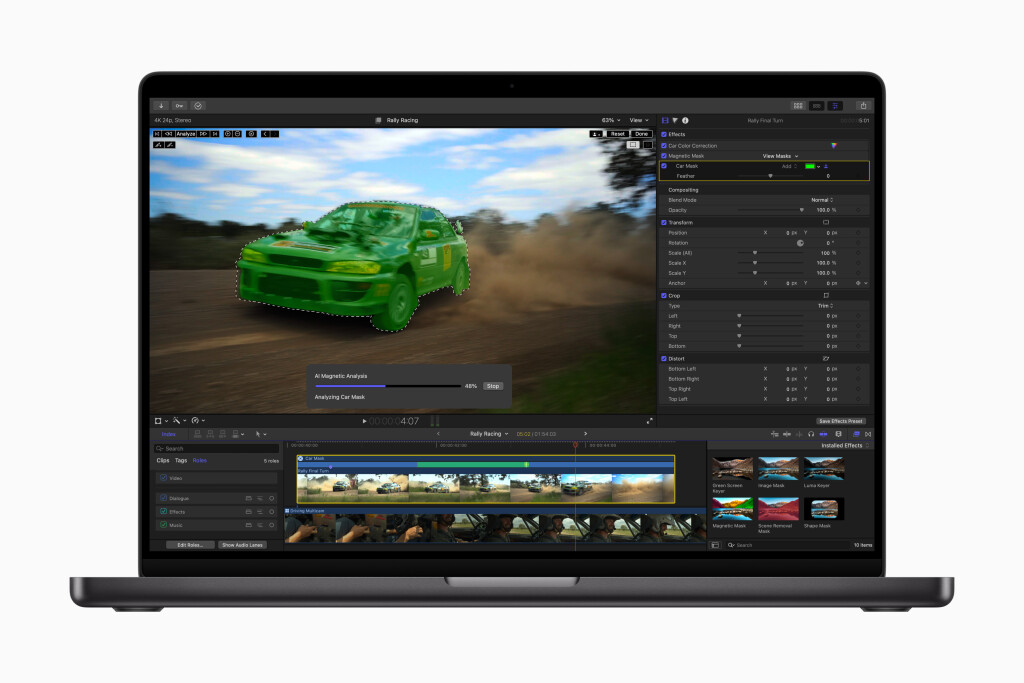
Magnetic Mask is like rotoscoping and chroma keying like you always wished it worked – people, objects, shapes, isolated using machine learning. I am very keen to abuse this one; some quick tests were really impressive.
Since this is dependent on the silicon, you’ll probably want to check in on how this runs across architectures:
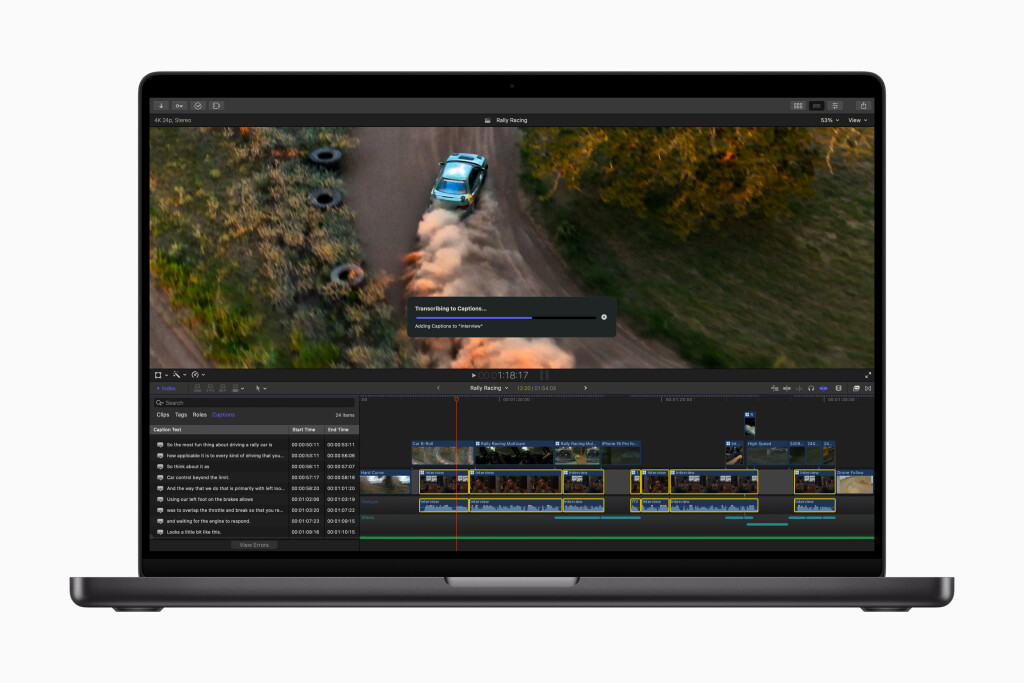
Transcribe to Captions makes automatic captions from spoken audio. You can also jump around clips with labels generated the same way. So there’s a very fast workflow here. I think transcription is my favorite thing about AI. (It’s also not as computationally costly. The heck with gen AI; I just want to save some grudge work. Wasn’t that the original idea?)
90, 100, and 120 fps timeline editing is now supported.
There are Picture in Picture and Callout effects, too, plus Reframe Effects and Modular transitions. To me, one of the most interesting features of Final Cut is still its oft-overlooked motion integration, which I hope gets fleshed out more on the iPad release, though I suspect there are some mobile performance restrictions and/or codebase differences in the way.
Apple has done a lot with those, in fact. These play to some of Final Cut’s advantages – quick-and-dirty, right-up-against-the-deadline results – watch:
This one speaks directly to my heart: “Reduce clutter in the browser by automatically hiding original clips when creating synced clips or multicam clips.”
Vertical Zoom to Fit scales clip heights to fit in the timeline. How we’ve gotten to 11 without this, I have no idea – this deserves a resounding “finally.”
There are also keyboard shortcuts for changing vertically stacked clip order and navigating clips in list view and editing clip texts. I’ll check back in with a cheat sheet – yes, this was the sort of stuff that made the blazingly fast innards of Final Cut needlessly slow to use coming from other editors (or even, dare I say, FCP 7). Also in there – Rename Clip, Show/Hide Audio Lanes, Expand/Collapse Subroles, Play Half Speed Forward/Reverse, Consolidate Motion Content, Paste Timecode, and Show Horizon.
Apple also includes a bunch of fixes and expands file support.

Final Cut Camera
Blackmagic and Apple are playing some leapfrog with mobile camera apps – but now’s Apple’s turn with Final Cut Camera 1.1. There are some nice goodies in this point release:
- 4K footage at 120 fps with iPhone 16 Pro and Pro Max. (I hope you opted for a lot of storage.)
- Preview Log video in SDR or HDR with Apple Log LUT on iPhone 15 Pro or later.
- Record in Log and HEVC (iPhone 15 Pro or later).
- Tilt and roll indicators and crosshairs for overhead shots help you compose.

And it’s free, so no complaints here. (Plus there’s no reason not to load a couple of these apps on your phone and use whichever suits a use case best.)
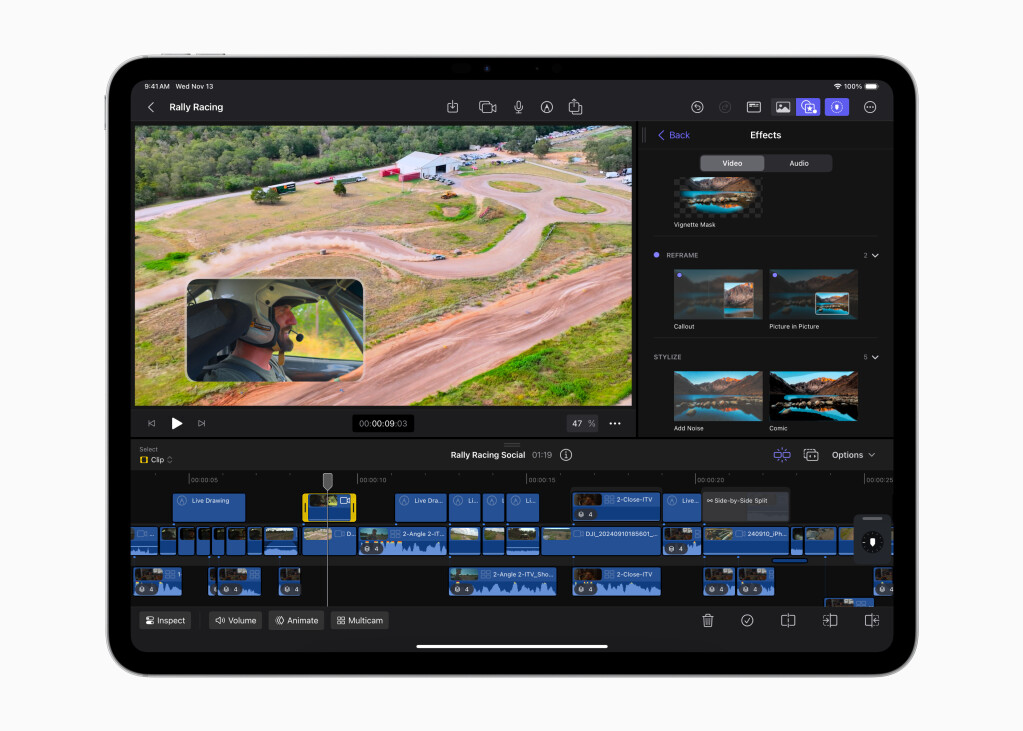
iPadOS
Final Cut Pro for iPad hits 2.1 here. Some of the desktop improvements make the jump, like high-framerate timeline editing support and those same keyboard shortcuts, plus Picture in Picture mode. AI-powered Enhance Light and Color adds automatic video quality improvement, too, which is great for making quick work of tasks on mobile.
Those Modular transitions are here, too, plus additional color grading presets – though still not quite the open-ended support you’d ideally love. Reframe effects are also available for highlighting video.
But interestingly, this time Apple has some iPad-focused features:
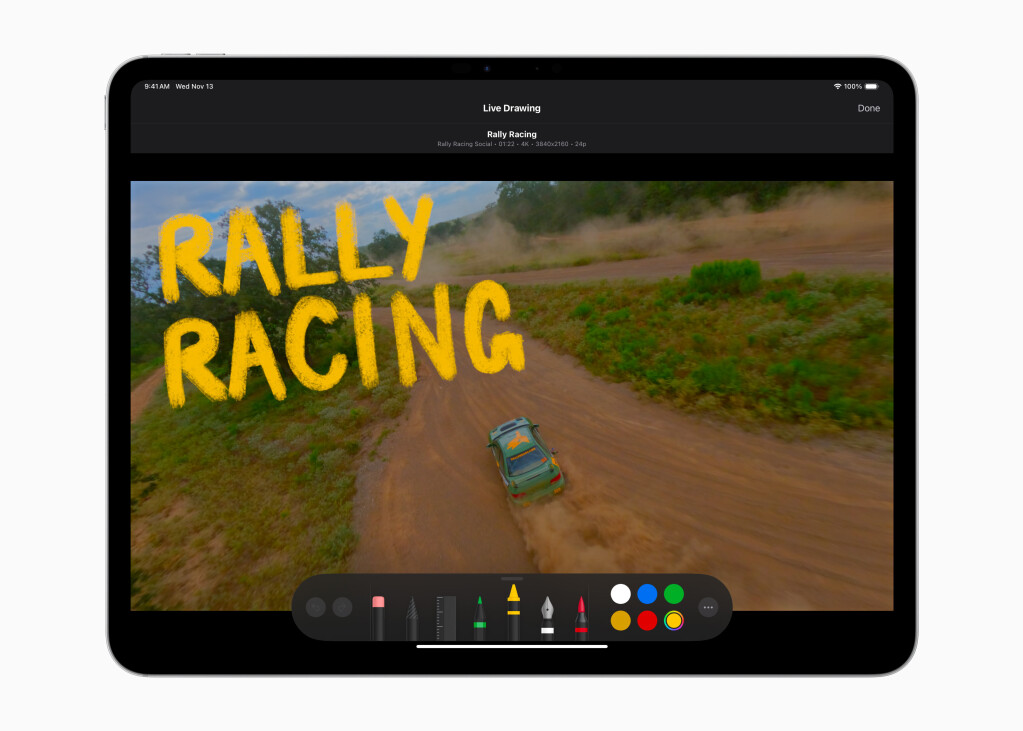
Live Drawing animations with watercolor, crayon, fountain pen, and monoline inks expands on the iPad version’s original Live Drawing and animation functionality – which was arguably the best reason to pick up the iPad version. (Apparnetly you can even use this with DaVinci Resolve on iPad if you prefer editing there.) That’s obviously especially nice with Pencil, but usable even without. If you do have Apple Pencil Pro, you get new haptic feedback in this release.
And Apple has expanded touch gestures alongside those new keyboard shortcuts:
• Expand or minimize clip height in the timeline with a vertical pinch to zoom gesture.
• Double-tap to reset white balance, manual focus, and exposure settings to default values in pro camera mode.
Plus fixes, fixes, fixes, including a bunch of Live Multicam improvements. (That is accompanied by a new version of the free Final Cut Camera app. (Final Cut Camera, Live Multicam, and external storage support all arrived back in June with 2.0.)
The iPad release is nowhere near as major as the desktop update, but it’s good to see the app start to mature – and get some unique features that might make you want to use the iPad and not just immediately jump to your desktop. (Though I suspect a lot of people will do just that, even if the subscription is only a few bucks. And why not? MacBooks are pretty portable, too!)
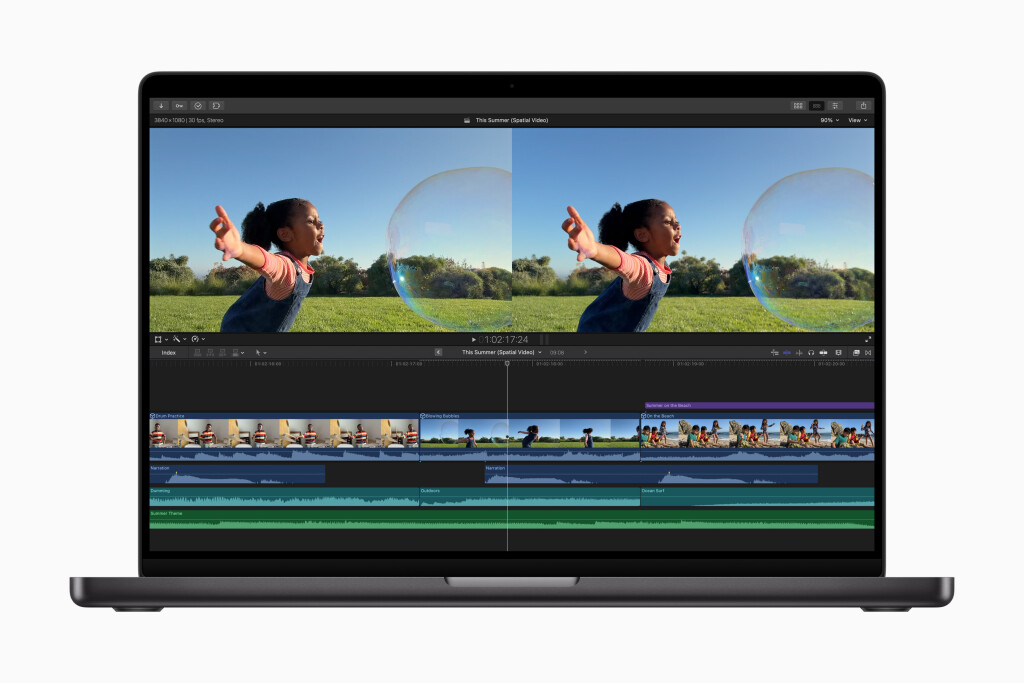
Spatial Video
Spatial Video still feels a bit like a tech demo and niche application, but as such it matters that Apple is supporting it across its hardware/software ecosystem. And I still believe there could be unforeseen applications that grow out of those technological adaptations outside the Vision Pro hardware. (Look no further than the 1990s history of QuickTime VR at the Apple Advanced Technology Group but – I’ll take us down that rabbit hole separately.)
You can now import and edit spatial video clips from Apple Vision Pro or iPhone 15 Pro or later on Final Cut Pro 11. I’m curious about how you could work with these with just the iPhone (which you very likely own) and not Apple’s headset (which you very likely don’t). Those <a href=“https://www.uploadvr.com/watch-iphone-15-pro-spatial-videos-on-quest/“>do work on other headsets</a>, and I expect there might be other ways to process this video for other outputs. Anyway, my point is – don’t sell this short just because you don’t have a Vision Pro.
There’s Compressor support, too, including the ability to transcode conventional stereoscopic video for editing in Final Cut Pro and playback on Vision Pro, and exporting/sharing, as well. There are also 90, 100, and 120 fps export presets to use with that new timeline support.
And the rest
Sequoia gets support for third-party Media Extensions across all Apple Pro Apps (Compressor, Motion, Final Cut Pro) on desktop, if you have the latest OS.
I really wish Motion would get some more love. Come on, Apple, you’ve got the money – and just as AI-enabled rotoscoping is interesting in Final Cut Pro, there are loads of potential applications for machine learning in Motion. For that matter, it’d be wild to use Motion on the iPad. But you do get some fixes there plus the updated media support.
But of course, you’ve got a ton of competition in each of these categories. It’s just generally good to see Apple keeping up the pace, and for the iPad version to start to get a little more parity with the desktop version, even if it’s still effectively a “light” version.
Final Cut Pro release notes
https://support.apple.com/en-us/102825
Final Cut Pro for iPad release notes
https://support.apple.com/en-us/102731